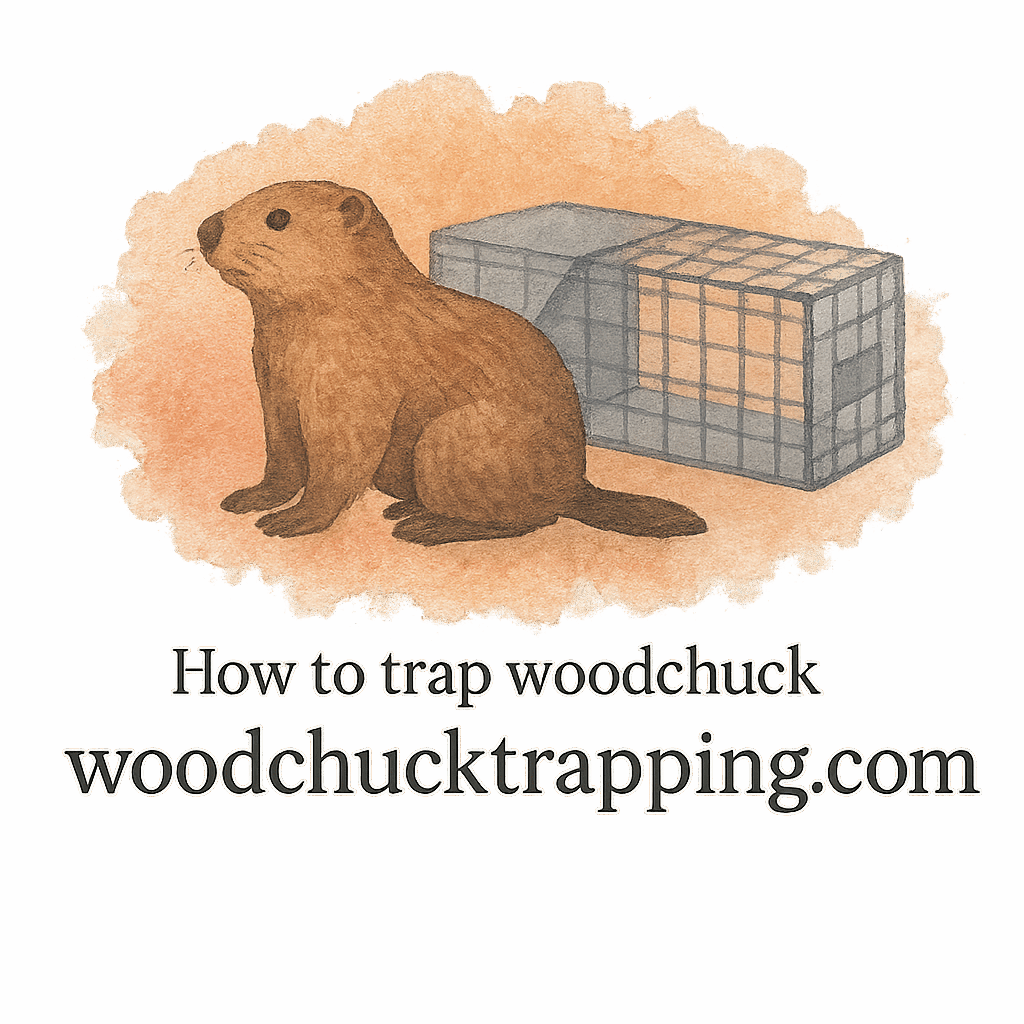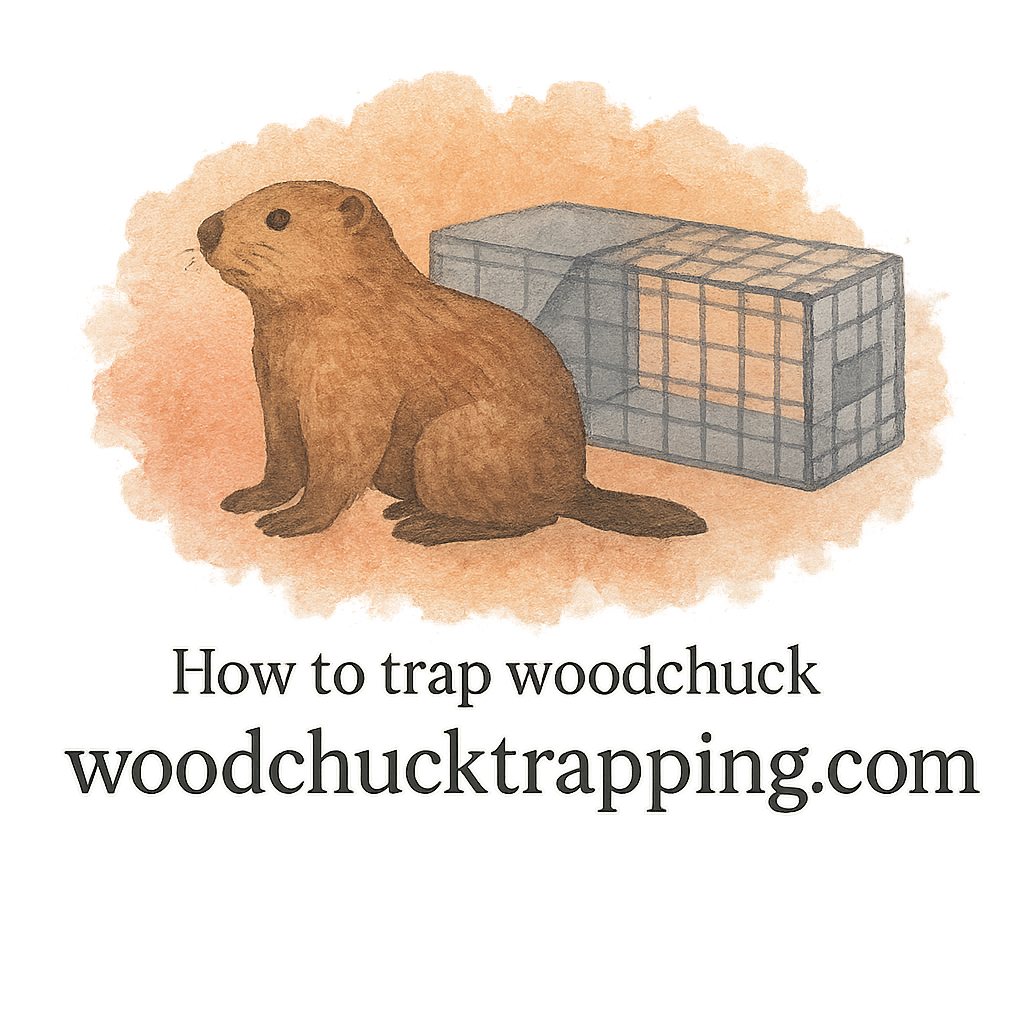Woodchucks, also known as groundhogs, might look cute and cuddly, but once they’ve made a home in your yard, they can cause a lot of headaches. Even after you’ve removed them, many homeowners find themselves battling the same issue again and again. Why? Because there’s a lot of misinformation floating around. In this article, we’ll dig into 6 of the most common myths about preventing woodchuck return and set the record straight with real, actionable advice.
Myth #1: Once You Trap a Woodchuck, It Won’t Come Back
The Truth About Territory Reclaiming
Woodchucks are territorial animals. If you remove one, another may move in quickly to claim the newly vacated space. Even worse, if you relocate the animal too close to your home, it may just find its way back.
Why Relocation Might Not Be Enough
Trapping is just step one. Without preventative measures, like sealing off burrows or removing attractants, you’re rolling out the red carpet for the next invader.
Learn more about effective Trapping Techniques that go beyond just relocating.
Myth #2: Fencing Alone Will Keep Woodchucks Out
The Burrowing Superpowers of Woodchucks
Think your fence is safe? Think again. Woodchucks can burrow as deep as 5 feet and create tunnels that bypass your barriers like a subway system under the city.
How to Use Barriers Effectively
If you’re using fencing, bury it at least 2 feet underground and bend it outward at the bottom to deter digging. Combine this with surface deterrents for a more foolproof plan.
Check out our Prevention & Damage Control guide to build an impenetrable defense.
Myth #3: Natural Predators Will Scare Them Off
Why Woodchucks Are Smarter Than You Think
A few fake owls or coyote urine sprinkles won’t fool these furry engineers for long. They may be cautious, but they’re also adaptable.
Predator Scents vs. Real Risk
Predator scents can work in tandem with other methods, but on their own, they lose effectiveness fast.
Want better alternatives? Visit our Scent Bait Tag to understand how to leverage natural cues more effectively.

Myth #4: All You Need Is One Type of Trap
Different Situations Need Different Tools
There’s no one-size-fits-all solution. Whether you’re dealing with a large yard or a narrow side garden, you need gear that matches the terrain and target.
Why Trap Placement and Size Matter
Compact traps may be better for small yards, while larger traps might be necessary for adults. Placement near active burrows and travel paths is key.
Browse our reviews on Compact Traps and top Equipment picks.
Myth #5: You Can Ignore the Problem Until It’s Visible
Subtle Signs of Infestation
Just because you don’t see a woodchuck doesn’t mean they aren’t there. Chewed plants, dirt mounds, and odd holes are all early signs.
The Cost of Waiting
The longer you wait, the more entrenched their tunnels become. Plus, unchecked burrowing can lead to foundation damage.
Know what to look for on our Infestation and Signs pages.
Myth #6: DIY Methods Always Work
Common DIY Fails
From ammonia-soaked rags to motion sprinklers, most homemade fixes offer only short-term relief—if any at all.
When to Call in a Pro
When traps fail, or damage escalates, it’s time for expert help. Professionals bring proven tools and tactics to the game.
For more, check our Trapping Essentials.
Why These Myths Persist
Myths linger because they’re easy answers to complex problems. Some come from outdated advice, while others are just repeated hearsay. It’s time we replace fiction with fact.
Creating a Multi-Layered Prevention Plan
Combining Lure, Bait, and Trap Placement
Luring is an art. Use fresh vegetables and commercial bait, but always place traps where travel paths intersect.
Read more at Baiting & Luring.
Legal and Safe Practices
Many states have regulations on trapping and releasing wildlife. Safety isn’t just for you—it’s for the animals, too.
Know the rules with our Laws & Safety section.
Best Tools and Equipment for Woodchuck Control
Essential Gear
You’ll need gloves, scent-free tools, and humane traps. Skipping the right gear can cost you time and results.
How to Use Them Efficiently
Always wear gloves to avoid transferring human scent. Use Trap Gear, and explore top-rated Gloves and Tools.
The Role of Consistency in Long-Term Prevention
Trapping once isn’t enough. Consistently inspect, clean, and reset traps. And don’t forget to monitor for new burrows.
Woodchuck Behavior: What You Should Know
Seasonal Patterns
They’re most active in spring and fall. Knowing their schedule helps with timing your prevention strategy.
Nesting and Burrows
They often nest under sheds, decks, and porches. Learn more about their patterns via our Burrows and Woodchuck tags.
Tips for Small Yards and Minimal Space
How to Trap in Compact Areas
Small spaces need smart tactics. Use corner traps and leverage visual cues like travel paths.
Discover more under Small Yard and Minimal Space strategies.
Humane and Safe Trapping Practices
Avoiding Harm to Pets and Other Wildlife
Use humane traps and cover them to avoid accidental captures. Never leave traps unchecked.
Visit Humane and Safety for responsible handling.
Common Mistakes in Woodchuck Prevention
- Ignoring early warning signs
- Not resetting traps
- Handling without gloves
- Relocating too close
Final Thoughts on Woodchuck Return Prevention
There’s no single solution—but there is a smart one. By debunking myths, understanding woodchuck behavior, and using the right tools, you can protect your yard and peace of mind.
Explore more at WoodchuckTrapping.com
FAQs
Q1: How far should I relocate a trapped woodchuck?
At least 5–10 miles away in a legal and safe location to prevent return.
Q2: What’s the best bait for woodchucks?
Fresh fruits like cantaloupe or vegetables like carrots and lettuce.
Q3: Can I trap woodchucks year-round?
Laws vary by state. Visit Laws & Safety for legal guidelines.
Q4: Are there humane ways to deter woodchucks without traps?
Yes, including exclusion fencing, noise makers, and natural repellents.
Q5: How can I tell if a burrow is active?
Look for fresh dirt, chewed vegetation, and droppings.
Q6: Is it safe to handle traps barehanded?
No. Always use gloves to avoid transferring scent and for your safety.
Q7: What do I do if I catch a non-target animal?
Release it immediately if safe to do so, or contact local wildlife authorities.
S


